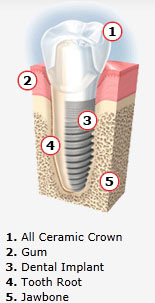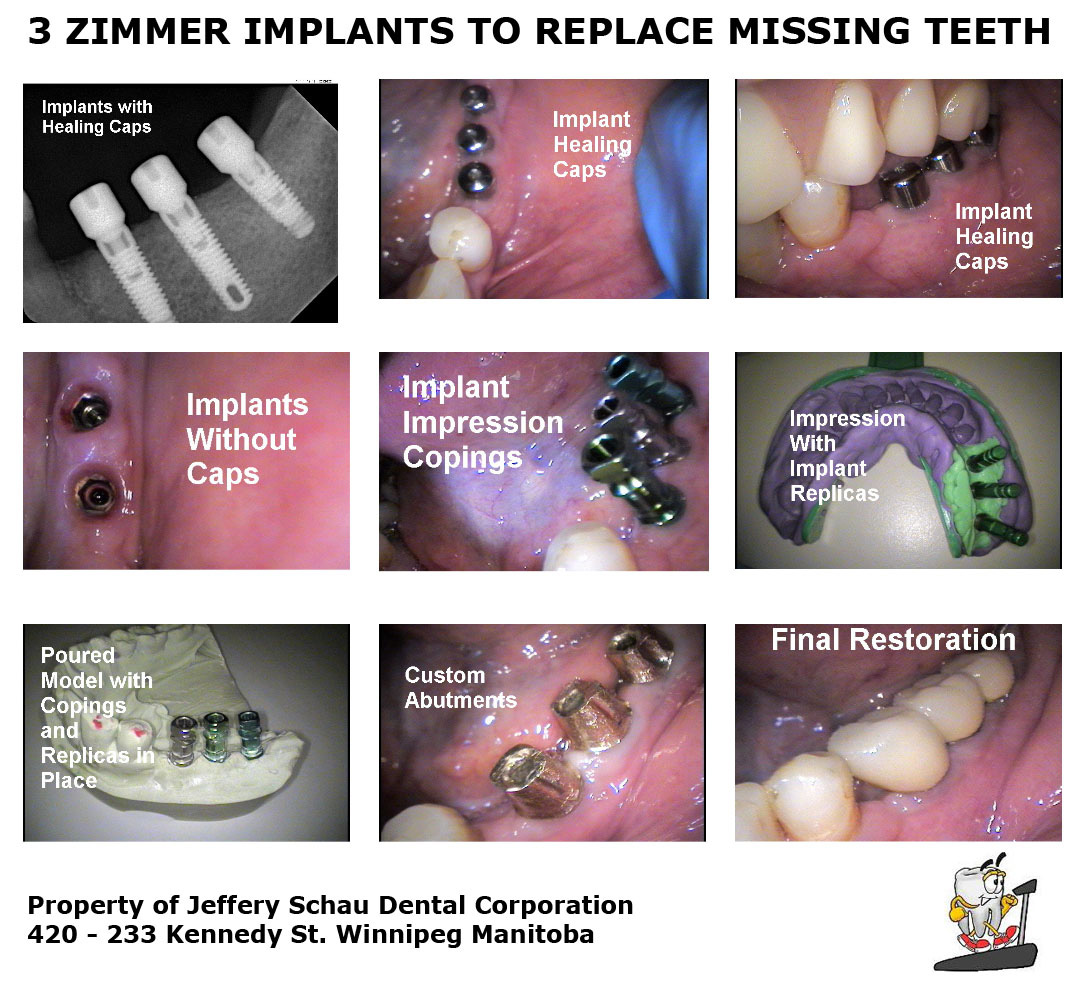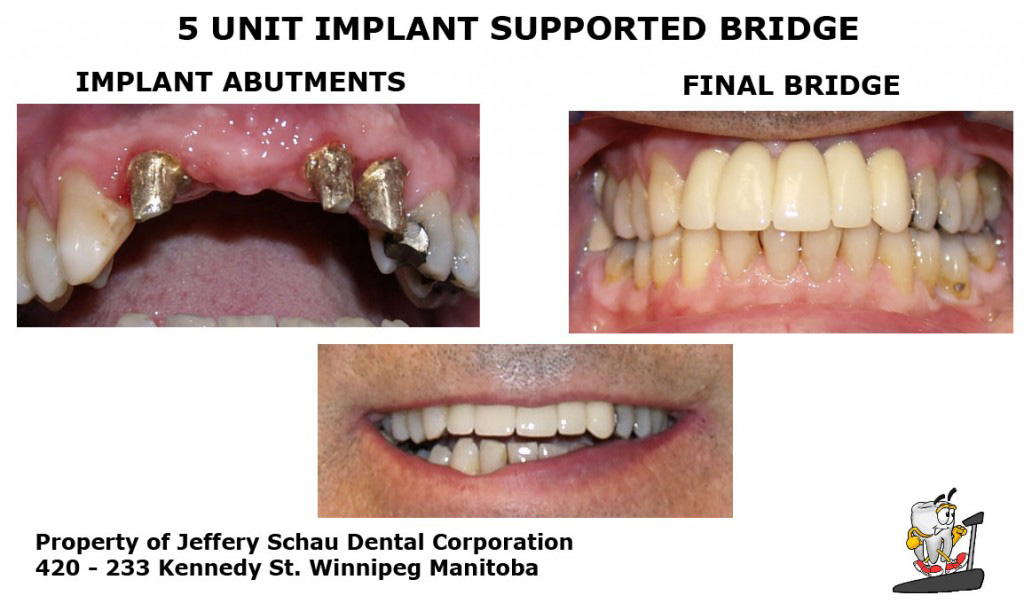Dental implants are quickly becoming the new standard in dental care for replacing missing teeth. In cases where a single tooth is missing and the rest of the dentition is in good shape, a dental implant is clearly the ideal choice. In more complex cases where multiple teeth are missing, dental implants still come into play, but more factors must be considered when choosing implants to ensure the right choice is being made. Dental implants can also be combined with complete dentures, providing them with an extra source of retention and stability.
In general, a dental implant is usually comprised of three components. A titanium screw placed into the bone, a specialized attachment called an abutment, that screws into the implant, and a crown or bridge that will be either cemented or screwed onto the abutment. As no natural tooth is involved, implants have the potential to last a lifetime. There is no chance for cavities, and they are more resistant to gum disease. However, like all dental products, problems can still occur so regular maintenance is required.

Photo from nobelsmile.ca

Dental implants require good quality bone to anchor into and a skilled surgeon to place the implant. In cases where there is not enough bone to place an implant, bone grafting can be done. Dr. Schau has seen a significantly higher rate of implant failure when artificial or foreign bone is used for bone grafting. Due to this, Dr. Schau only recommends using your own bone, harvested from elsewhere in the body, for doing bone grafts. He also works closely with skilled surgeons for any grafting procedures and placement of the implant itself. He then takes the case from there doing the restorative work on the implant to make it functional.
In some cases, to help coordinate treatment and final placement of the implant, a surgical template and/or radiographic guide is made. These will often be the same appliance, but in some cases be two separate appliances. Especially in cases for multiple implants, or cases where the bone is thin and bone grafting may be required, these guides along with 3-D scans, can be essential for the overall process and long-term success of the case.
As there are many companies getting into the implant market these days, one has to be careful which brand of the implant to use. Dr. Schau has chosen to stick with three of the leaders in implants who have been around a long time. This helps to ensure a quality product and future sustainability of the implant. The companies he uses are Nobel Biocare, Straumann, and Zimmer. You can check out their sites to learn more about the companies, or read on for case examples and photos done by Dr. Schau. If you already have an implant from a different manufacturer, not a problem. Dr. Schau and his team can still help you maintain it throughout the years.
Single Tooth Implant Replacement
When missing a single tooth, implants truly are the next best thing to natural teeth. In this case example, the patient was missing a single lower molar and looking to have the tooth replaced. An implant with a stock abutment from Nobel Biocare and Porcelain Bonded to Metal Crown (PBM) were selected for the replacement of the missing tooth. The following photos help demonstrate the stages and parts of the implant process.hout the years.

Multiple Teeth Replacement
When several teeth are missing, partial dentures could be made, or multiple implants can be placed. This patient was missing three teeth on the bottom left and really did not want to wear a denture to replace them. She opted for three Zimmer implants on which custom abutments and splinted PBM crowns were done. The crowns were joined together as this helps to protect the implants from potentially traumatic lateral forces near the back of the jaw. The photos show the restoration process.ut the years.

Multiple Tooth Replacement With Implant Bridge
When multiple teeth are missing, implants do not always have to be placed on a one to one ratio of missing teeth to implants. Depending on the location, quality and quantity of bone, and a number of teeth to be replaced, implant-supported bridges can often be used. In the case to the right, the patient had been wearing a partial denture to replace five top front teeth. He grew tired of the denture and wanted to have something fixed in place, closer to natural teeth. As a conventional fixed bridge would have been very extensive and have a poor long-term prognosis, implants were the desired option. As you can see in the photos, 3 implants and a 5 unit bridge were placed to replace the missing teeth. The patient now has a great smile and nice solid front teeth ready to bite into anything natural teeth could.
So if you are missing some teeth, or struggling with dentures that do not want to stay in place, implants might be right for you. Contact us today to set up a consult to find out what we can do for you.

